Have you been tired of spending on chicken feed? Well, you don’t have to break the bank to feed your flock well; you only need creative homemade chicken feed ideas.
Though commercial feed is ready-made and balanced well, I believe the homemade feed allows for raising healthy and tasty bird meat and quality eggs.
So, I’m here to share DIY, free, and homemade chicken feed ideas for a sustainable feed.
1. Kitchen Scraps
Chickens will eat anything from the kitchen, including food scraps, except for a few items.
They can gulp from veggie peels, stale bread, fruit scraps, and leftover rice, but you need to figure out the safe kitchen scraps for chickens.

I allow them to feast on fruits such as apples, berries, bananas, tomatoes, peaches, pears, melons, and grapes.
If you’re a veg lover, you cannot make your chickens happier.
The bird flocks enjoy pecking and eating raw beets, brussels, broccoli, carrots, cauliflower, sprouts, and corn. You can also offer them cucumbers, garlic, mangels, peas, squash, and sweet potatoes.
They can devour whole small veggies, such as peas and beans, and can also soft items, including tomatoes and cucumbers, without any human effort.
But you need to chop the hard cover items and greens such as cabbage, kale, lettuce, and sprouts.
Besides, what leftover chicken can eat are dairy products such as milk, yogurt, and cheese.
As chickens naturally eat bugs, worms, and even mice and toads, offering meat is also safe. They feed on every kind of meat and seafood, but avoid fish bones.
Besides, you can give them a little cooked pasta. No excuse for any kind of pasta — macaroni, noodles, spaghetti, etc.
I also provide my chickens with overcooked or stale eggs. Mashed eggshells are the best supplement for chickens.
But you need not give your chickens foods high in fat, sugar, or salt and processed foods, such as pasta, bread, and rice.
Besides, avoid feeding them raw potatoes, avocado, chocolate, coffee, and dried beans.
I don’t offer moldy food, rancid, rotten, spoiled, or raw potato peels.
2. Garden Weeds
Have you been tired of disposing of garden weeds?
Besides composting, you have another option to manage garden and yard weeds.
Common garden weeds are highly nutritious, green plants that contain proteins, carbohydrates, calcium, sugar, and vitamins.
Some common edible weeds include amaranth or pigweed, common cheeseweed, dandelion, chickweed, clover, kudzu, and purslane.
They are free greens for chickens, which you can add to the chickens’ diet and reduce the garden waste.
You can pull out one or two rows of weeds every other day.
I suggest you pick the young weed with 4 – 6 inches. The poultry birds can easily digest the tender leaves and stems.
The long and mature weeds also suck up the nutrients and fertilizers from the soil, which is not good for your garden. So, I use a stirrup hoe on the rows of weeds.
But before harvesting the garden weeds, make sure that they are not treated with herbicides or pesticides.
Also, don’t feed common bindweed or field morning glory, and other weeds in the nightshade family, and jimson weed.
3. Grass Clippings
Though many claim that grass clippings are bad for chickens to eat, as they swallow the entire blade of grass without chewing. So, it’s not healthy.
And there are other poultry keepers who encourage feeding birds clippings.
I myself have added a chunk of grass clippings to my chickens’ diet and found no symptoms of harm. So, it’s okay to feed birds clippings.

5 percent of clippings can be the max to add to the diet.
It is a great source of fiber and natural forage for chickens.
Feeding chickens grass clippings helps produce nutritious eggs filled with vitamin A, Omega, Vitamin E, and more. It also accelerates the building of organs, muscles, and tissue in chickens.
Feed only fresh clippings from pesticide-free lawns. Don’t offer the clippings treated with chemicals.
4. Sprouted Grains
Oh, they love this feeding idea.
Commercial or homemade sprouted chicken feed is rich in micronutrients such as fiber, vitamins, minerals, and proteins.
Another good news is that your bird flocks can enjoy this feed throughout the year, regardless of weather and seasons.
The sprouting enhances the enzyme source in the diet and makes the feed more digestible for chickens. The grains become soft and 40-50 % more easily digested.
As sprouts are packed with chlorophyll and beta-carotene to make the darker yolk.
You need not stress to grow seed sprouts, as it is easy and convenient with a few supplies. You need sprouting grains, water, and a container.
The options are barley, wheat, corn, oats, soy, lentils, and other legumes.
Once the seeds have sprouted, you can serve your birds with bulk sprouts. If you wait to grow for a few days, the sprouts turn into fodder.
5. Fermented Grains
When fermented grains are soaked in water under optimized conditions, beneficial lactobacillus bacteria turn starch and sugar into lactic acid.
This helps boost probiotics, enhances gut health, and lowers pH to prevent the growth of harmful bacteria.
You can offer fermented grains as a primary food for chickens or an occasional treat. This is also great for winter feeding.
The soaking of grains reduces phytic acid and boosts the immune system of birds. Feed your chickens that are molting.
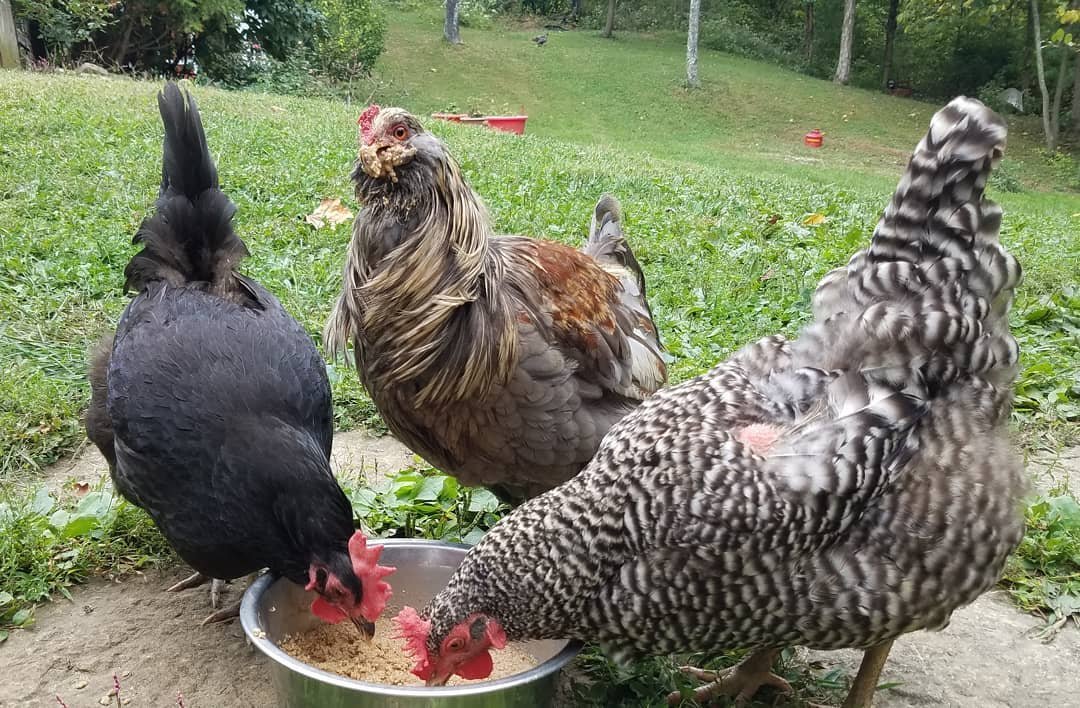
Besides, chickens lay eggs with increased weight, thicker shells, and stiffer shells.
It’s a simple process in which you need to mix the grains with water in containers such as a Glass jar and a ceramic container.
Water should be dechlorinated or filtered water, and enough to submerge the whole grains in the container.
Then, cover the container with a loosely fitted lid and place it at a moderate temperature for 2 – 4 days.
Now, your fermented chicken feed is ready to serve after draining off the excess water.
6. Cracked Corn Mix
Cracked corns are dried corn kernels that have been crushed into pieces.
They come from maize, which is used to produce scratch mix for chickens. I also believe that maize is more nutritious and contains less sugar than sweet corn.
The cracked corns are rich in carbohydrates, which can be a good supplement in winter for energy.
I don’t recommend feeding only cracked corn. You can make a cheap DIY chicken feed mix for your chickens instead.
A simple recipe contains cracked corn, oats, and sunflower seeds.
7. Mealworms (DIY Farmed)
Mealworms are small, yellow colored larvae and darkling beetles in the juvenile stage.
Do you know that mealworms are rich in protein and other nutrients, which makes them a great food source for chickens?
They are sustainable insect proteins for your poultry.
My chickens enjoy the taste of these larvae. I often use them to train and raise my bird flocks well.
As mealworms are a good source of protein, they contain decent levels of leucine to boost the uptake of calcium. This helps regrow and recover the feather growth of birds after molting.
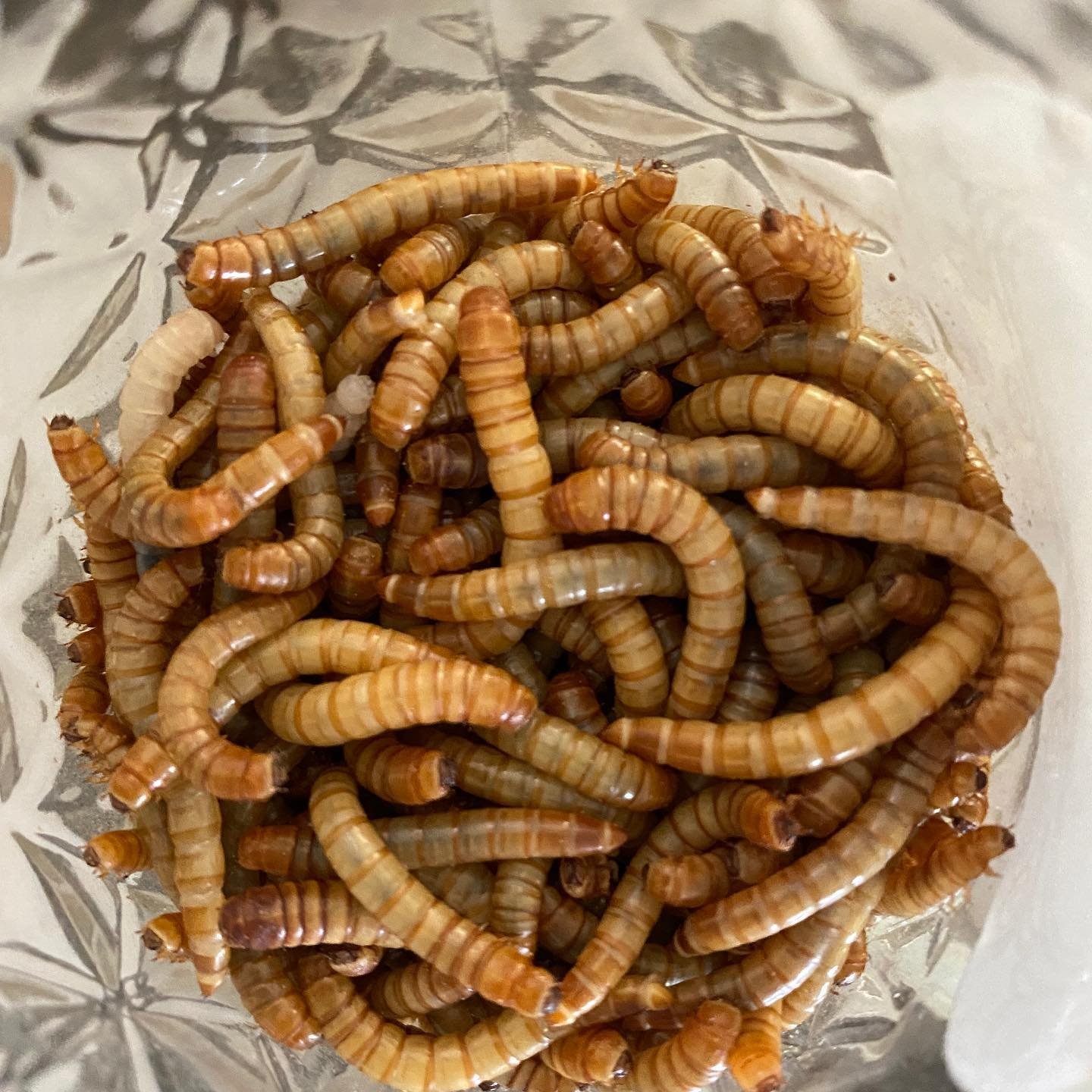
You will also notice the increased quality of eggs and egg production.
This live food also boosts immunity, boosts feather quality, and improves digestion.
You can raise your own mealworms for chickens. To start, you can take a 20 X 10-inch container and raise a colony of 1,000 – 5,000 mealworms.
After a proper bedding, offer mealworms with root vegetables, such as potatoes and carrots.
You can also give them vegetable and fruit peels, and other vegetative scraps.
8. Black Soldier Fly Larvae
When larvae, black soldier fly (BSFL), look like wormmeal and wasp as an adult.
They are a nutrient-dense protein source for layers and broilers. Also, growing black soldier fly feed for chickens is an eco-friendly and waste-reducing way.
These insects break down kitchen scraps faster than composting, within 24 hours.
You can feed BSFL live or freeze them before offering them. Also, you can dry the larvae for later consumption for chickens or long-term storage.
It’s also a simple approach to grow free or low-cost feed for your chickens.
You can start with the compost bin or DIY setup. A 55-gallon container works fine. After adding bedding substrate, you can give starter feeds such as ground corn, horse feed, spent fruit and vegetables, and rice bran.
9. Fodder System
Fodder is a living chicken feed that is made of plants, such as grasses, legumes, and grains.
It not only makes birds full but also helps relieve boredom in a flock. Also, it is more digestible and rich in vitamins, proteins, and minerals.
Besides, fodder provides grains and greens at the same time in a single system.
It’s a convertible and sustainable chicken feed, and keepers can grow fodder at home easily. 50 lbs of grain can produce 200 lbs of fodder, depending on the grain and seed.
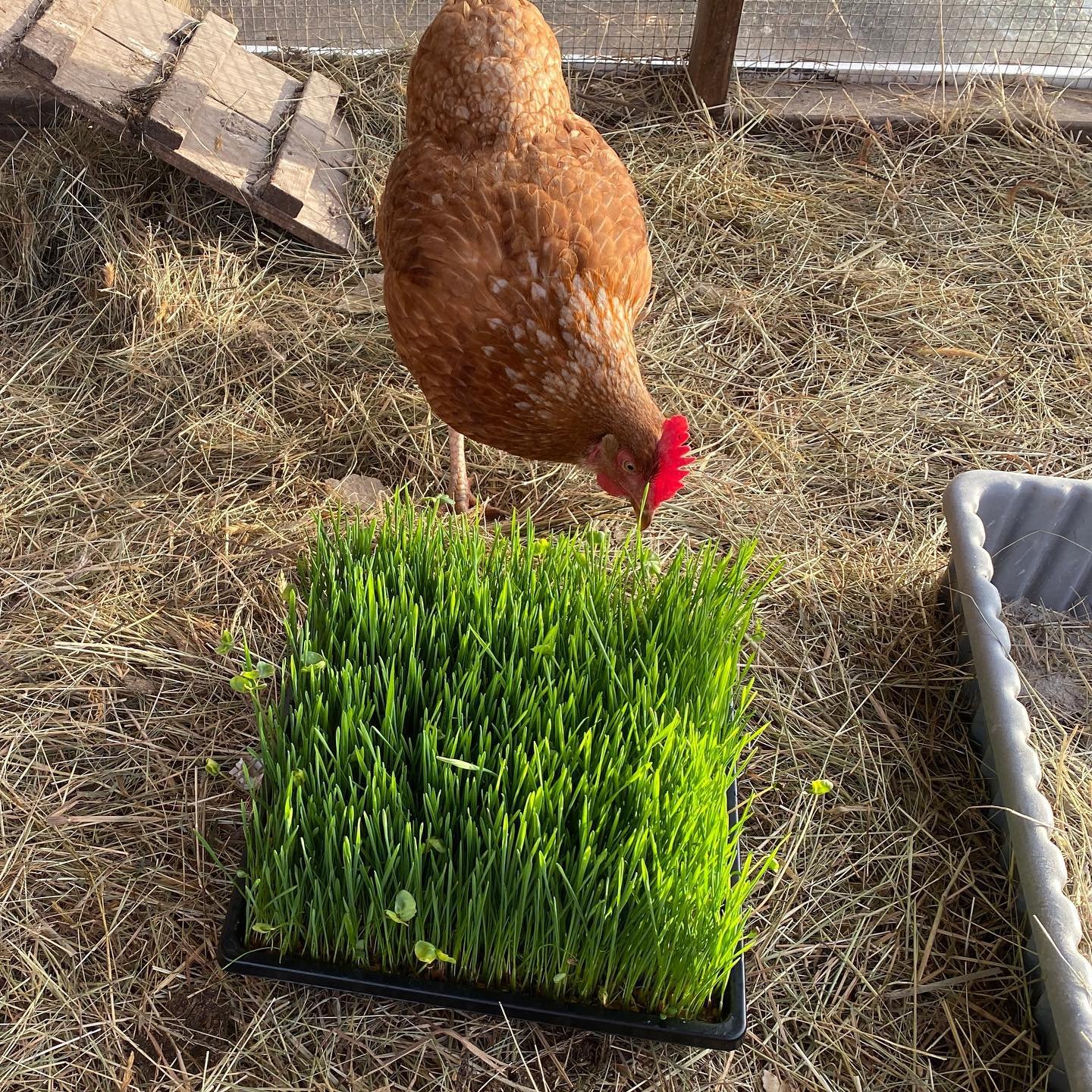
You can grow fodder all year round, even in winter.
You can easily produce fodder feed indoors because it’s grown directly in trays without soil. You can start your homemade chicken fodder system with supplies such as a tray with drainage holes, seeds, and water.
First, soak the grains or seeds in water. You can take anything from wheat, barley, oats, millet, soybeans, buckwheat, and alfalfa.
Spread grains in the container and water them 3 – 4 times daily.
Within 5 – 7 days, you will see the sprouts reaching 1-3 inches in length. You can harvest the bulk of the fodder and spread it around your chickens.
10. Garden Leftovers
If you’re a gardener, you must have some post-harvest waste.
Overripe fruits and vegetables, such as cucumbers, zucchini, pumpkins, berries, apples, and melons, can make excellent treats for your chickens.
Besides, there are also unnecessary plant parts, such as lettuce stalks and carrot tops, that you can give your birds.
But avoid some items, including citrus, nightshades, rhubarb, and green tomatoes. You can better compost them for organic fertilizer.
When harvesting, you may have to throw out several produce items, such as damaged (naturally) fruits, vegetables, and greens, as waste.
But you can manage garden waste efficiently for chickens.
The good news is that you can make this seasonal feeding by crop rotation.
Besides, you can grow plants for chickens to eat.
11. Crushed Eggshells + Oyster Shells
Don’t throw cracked eggshells and oyster shells in the compost.
If your chickens lay soft or shellless eggs, the chances are that they lack calcium. These have recycling calcium content, which can make your hens produce stronger eggshells.
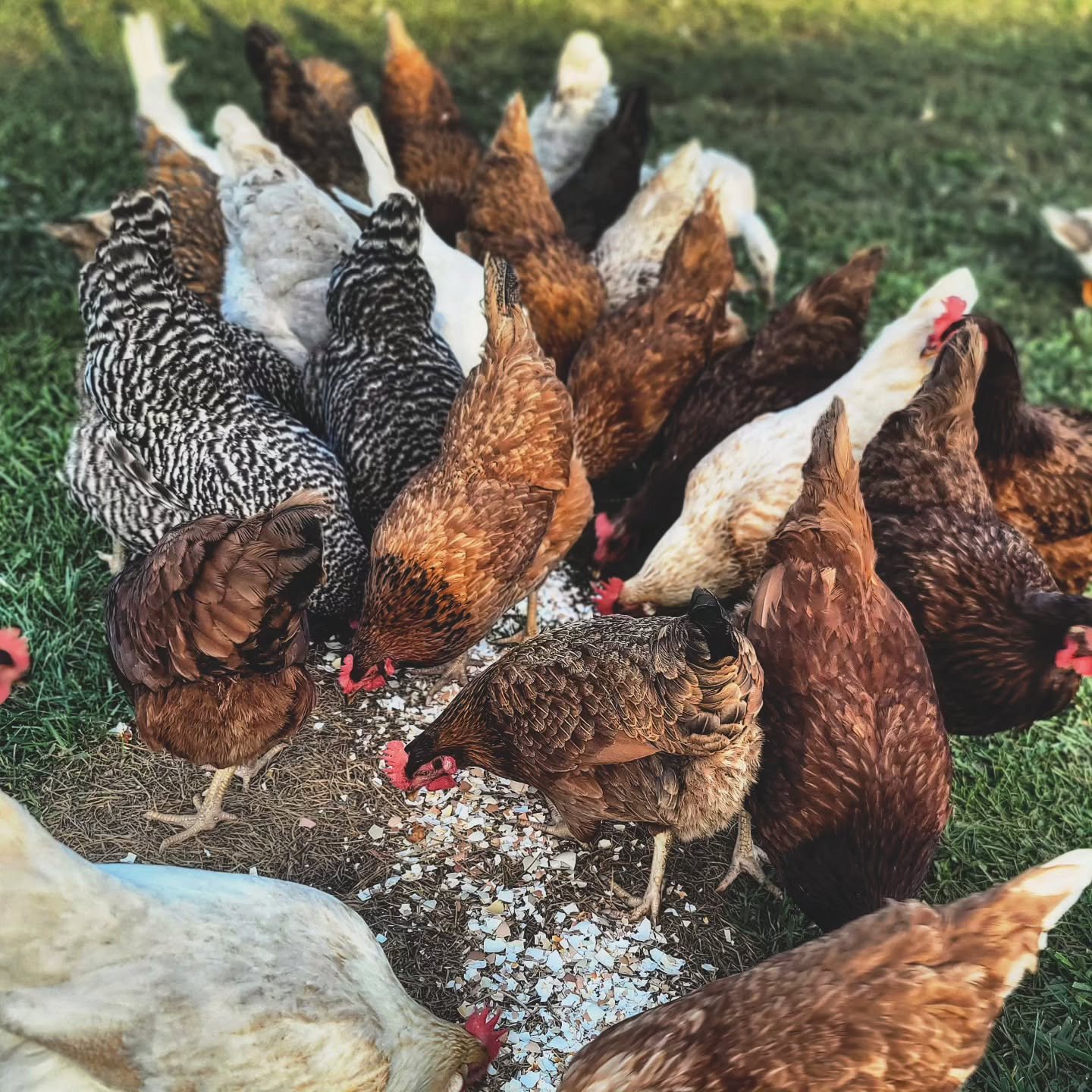
These calcium supplements for chickens also help grow and heal bones in the flock.
It’s not that chickens don’t like to eat eggshells or oyster shells; they just can’t swallow them without breaking.
So, you need to crush the shells in a mortar or a grinder into small pieces so that they can peck and gobble up.
12. Table Leftovers
I know that when we throw a party or celebrate any event, the chances are high that we prepare more food than needed.
Even, we have lots of table leftovers after eating daily.
These table scraps can be anything from cooked foods to leftover fruit cuts or vegetable medleys.
Your birds will happily gobble up breads, crackers, rice, stale cereal, chips, and other pantry extras. They will eat leftover noodles, pasta, and biscuits.
You can also give them cooked meat if you have leftovers, but don’t feed them raw meat.
They do well on both raw and cooked vegetables and fruits.
13. Bugs + Worms from Compost
This is a free way to raise chickens while producing good-quality compost.
Compost contains food scraps, manure, and mulch that attract worms, flies, and other live protein sources for chickens.
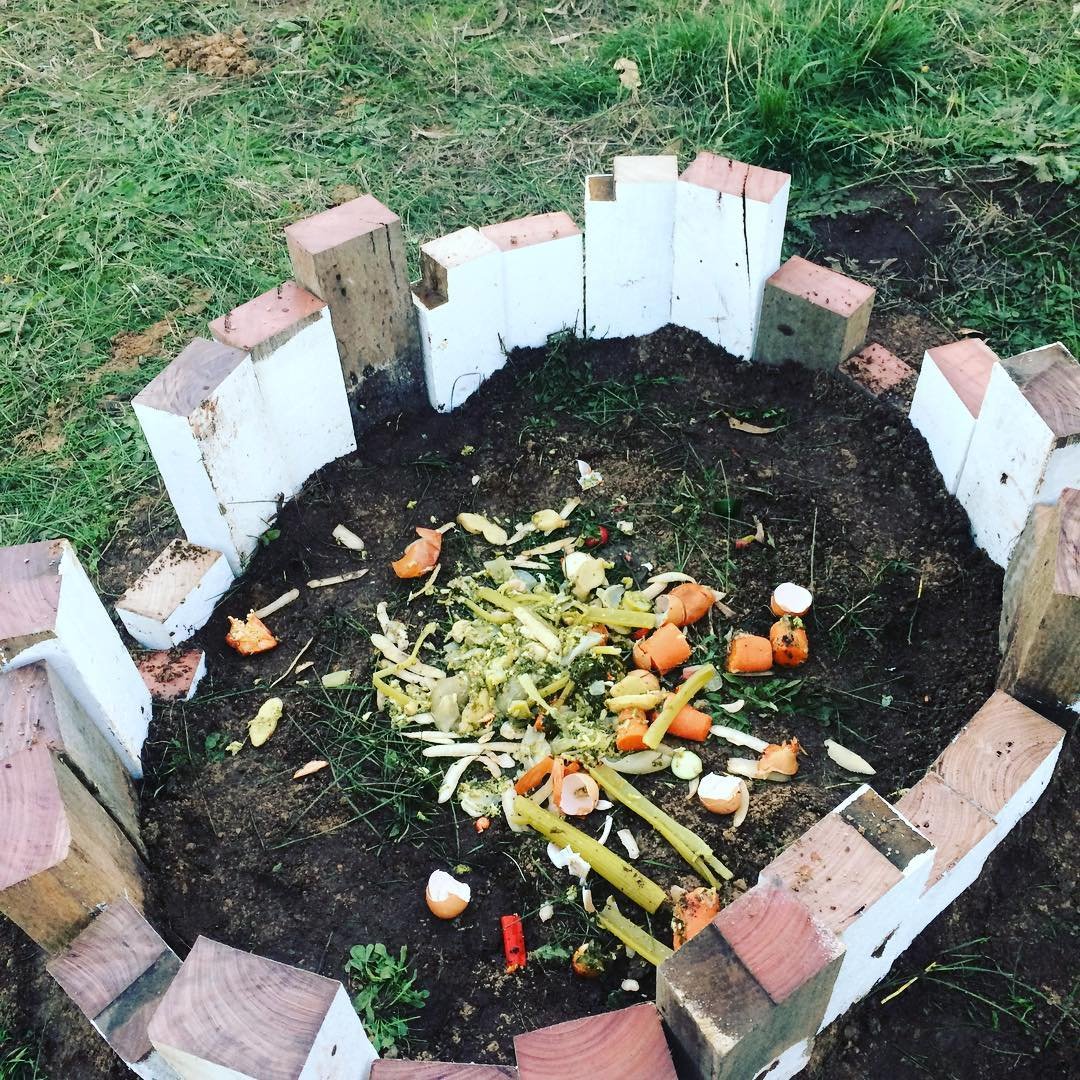
To make a compost pile for chicken feed, you need to dump only organic waste, such as yard waste and kitchen scraps.
Many deposit brown matters, including leaves, sawdust, wood chips, dead plants, coffee and tea grounds, and straw, into the pile.
With that, they layer with green materials such as livestock manure, eggshells, garden weeds, aquatic leaves, grass clippings, and kitchen scraps.
The piles should be moist but not soggy to attract flies, insects, and bugs.
Then, you can allow your chickens to have free access to the compost piles.
14. Homemade Grain Mix Recipe
If you have grown chicken feed yourself, you need to know the perfect blend or homemade feed recipe for your bird flocks.
For grower feed, mix 52% dried corn, 29% roasted soybeans, 11% crimped, 1% limestone or aragonite, 3% fertrell nutri balancer, 3.5 % fish meal, 0.5 kelp fish, and 1% fastrack probiotic.
For layer feed, combine 49.% corn, 30% roasted soybeans, 11% crimped oats, 5% feed grade limestone or aragonite, 3% fertrell nutri-balance,r and 0.5% kelp meal.
The simplest mix includes 1 part whole oats and 1 part black oil sunflower seeds.
These DIY homemade chicken feed recipes are cost-effective and customizable. You can store them in airtight bins and rotate ingredients.
15. Free-Range Foraging
If you really want to cut down the feed cost, keep free-range chickens.
Araucana, Leghorn, Gold Buff, Rhode Island Reds, Buckeye, barred Plymouth Rock, and Egyptian Fayoumi are some top chicken breeds for free range and foraging.
Allow these chickens to roam freely in the backyard or a free-range system.
They forage for natural foods such as insects, seeds, and grass.
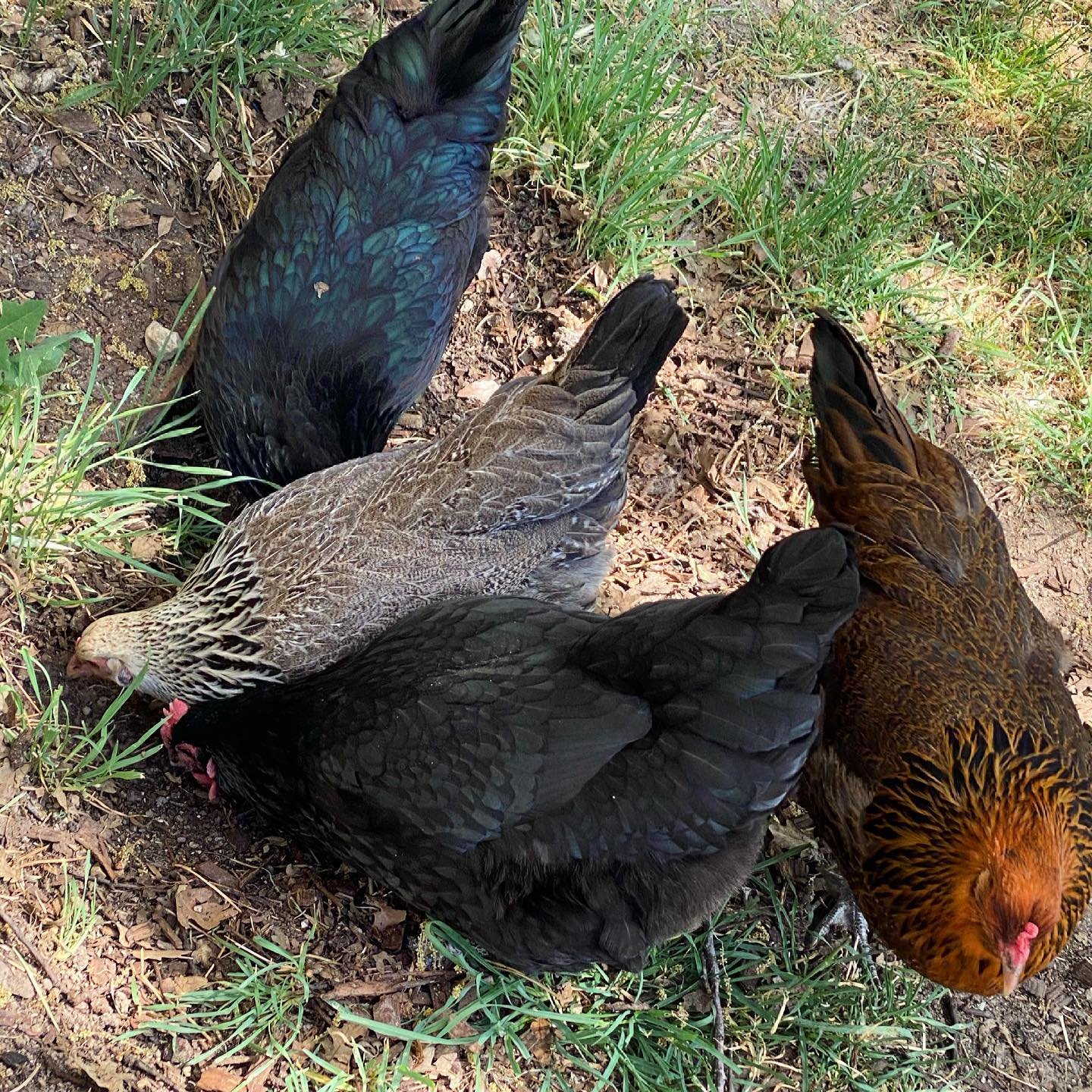
When you allow chickens to roam free range, you need to make sure the area is predator-free. For this, you need to assign your guardian dog, add a rooster to the flock, or supervise the area yourself.
You can let your chickens free-range during the daytime and train them to get into the coop before sunset or dark.
If enough space, you can rotate areas for chickens to pasture.
Final Thoughts
These homemade chicken feed ideas are totally free and safe. You should not give your birds these feeds as a primary food, but as a supplement.
Also, give your chicken these feeds as treats and in moderation.
Based on the available feed source, you can customize the recipe.

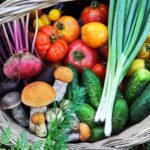

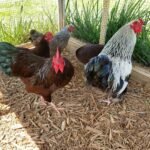

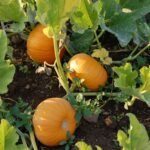

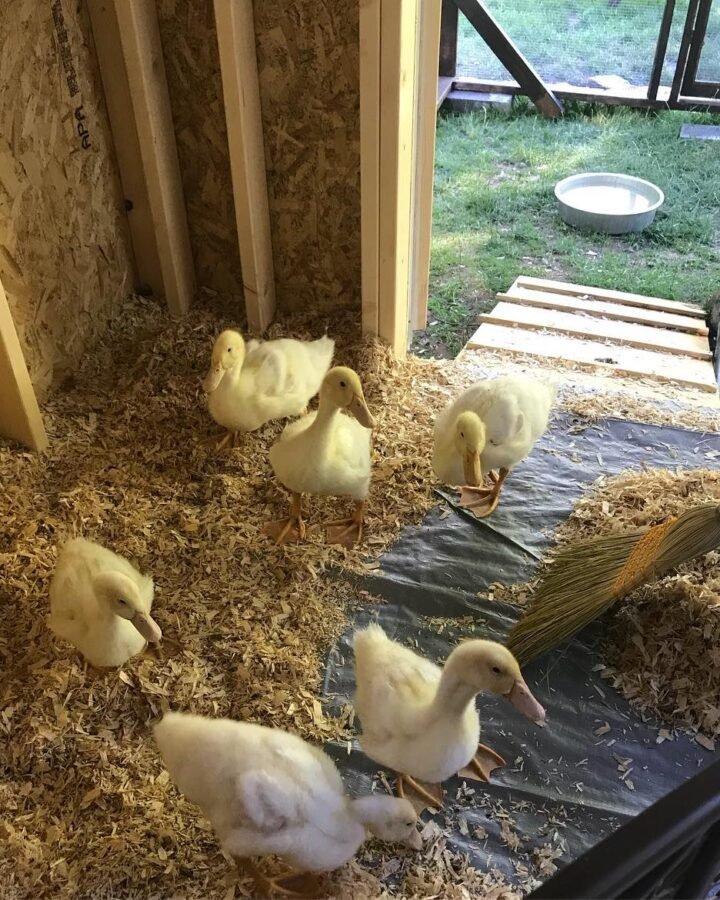
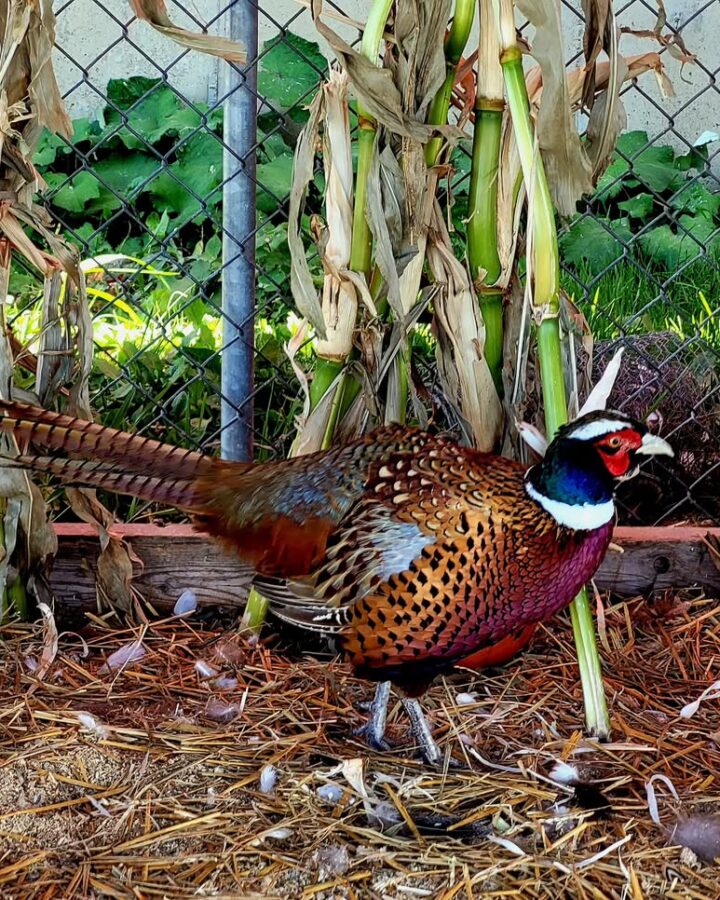
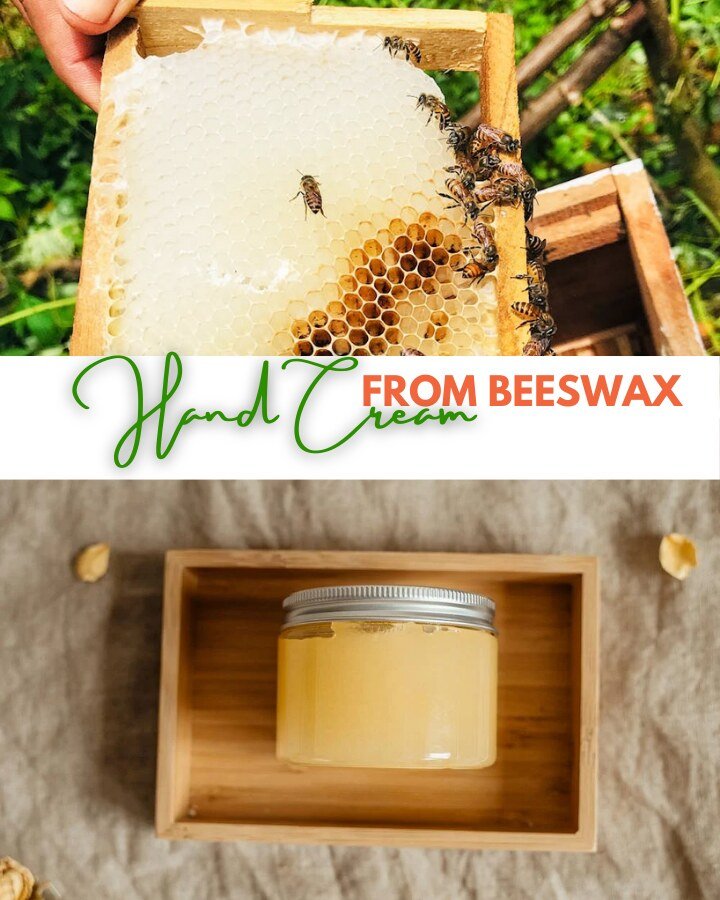
Leave a Reply